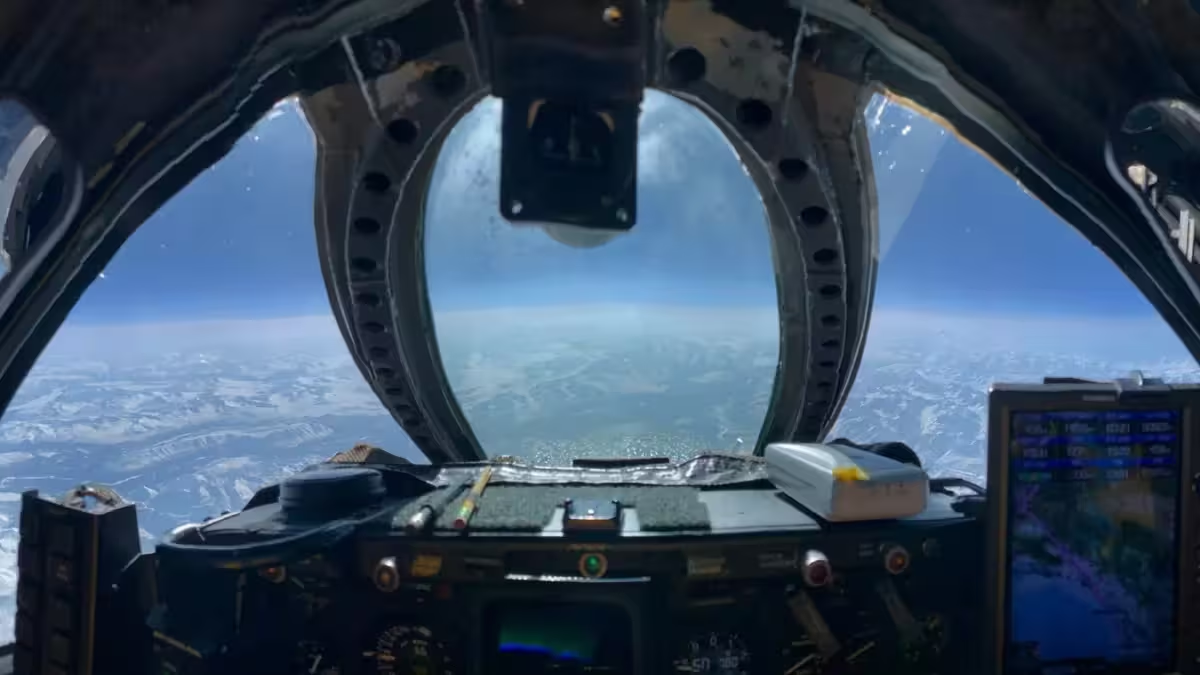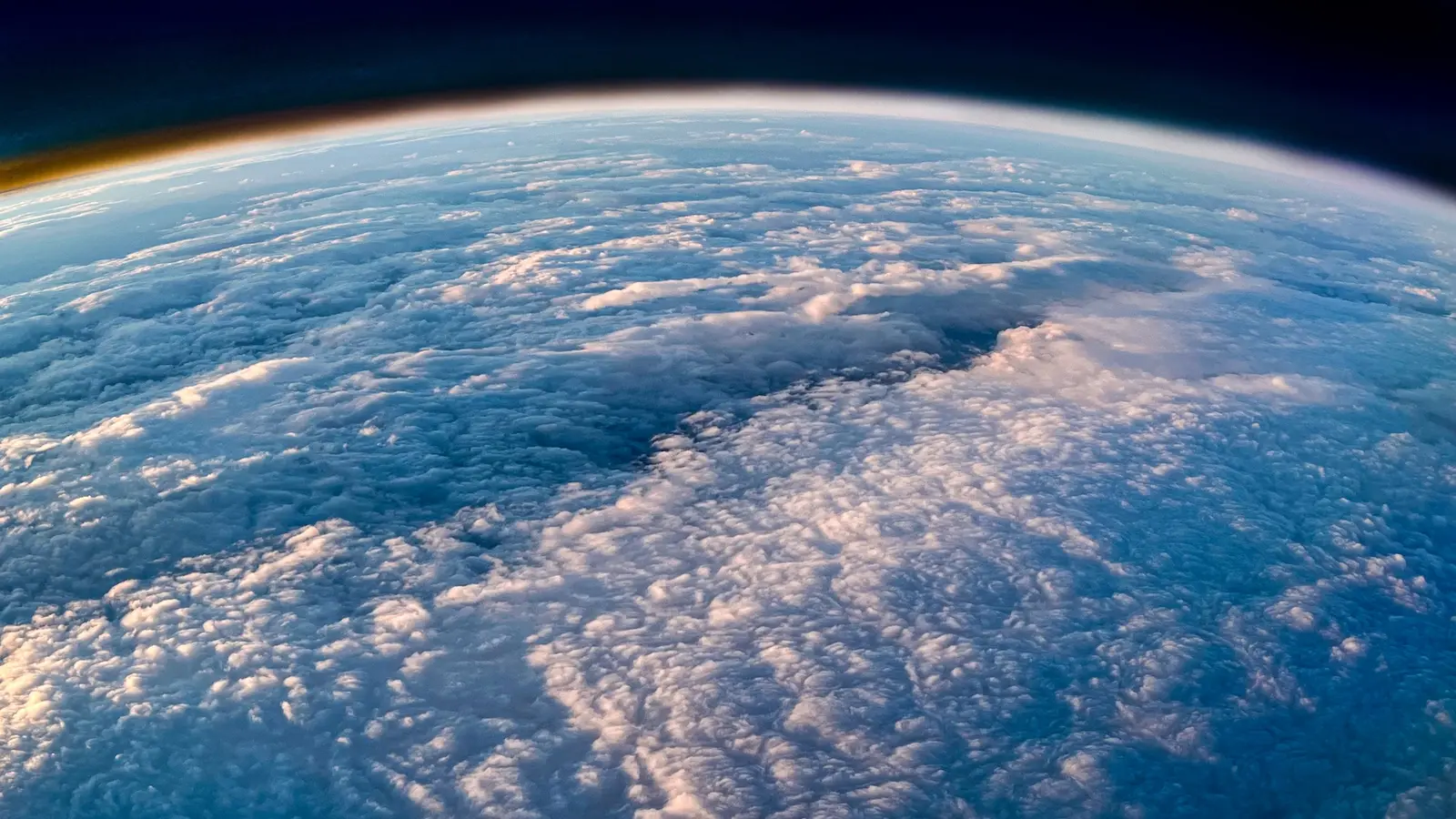5 Minutes
an unexpected high-altitude source of contamination
Perchlorates are a family of chlorine-containing compounds known to interfere with thyroid hormone production and to persist in the environment. While synthetic perchlorates are used in explosives, batteries and rocket propellants, most perchlorate found in nature has long puzzled scientists because of chemical signatures that point to high-energy processes in the upper atmosphere. A recent airborne study has now traced natural perchlorate formation to the stratosphere, roughly 10–50 kilometers (6–31 miles) above Earth, and identified the types of particles that host these toxic molecules.
Mission and methods: sampling the stratosphere
Researchers collected aerosol samples during a campaign focused on stratospheric particles using NASA’s WB-57 research aircraft, which flies up to about 19,000 meters (62,000 feet). These flights made detailed chemical and physical measurements of tiny particles suspended in the stratosphere. The team analyzed the composition of individual particles and compared detected perchlorates with known perchlorate signatures from other sources, such as rocket propellant. Their work appears in the July 28 issue of the Proceedings of the National Academy of Sciences (PNAS).
Key findings: perchlorates attach to smoke and organic-rich particles
Contrary to expectations, perchlorates were not associated with the abundant sulfuric-acid aerosols that dominate the stratosphere. Instead, the toxic chlorine compounds were found almost exclusively on two less-common particle types: nitrogen-rich aerosols and particles derived from smoke and organic matter. These carrier particles rarely reach stratospheric altitudes under typical conditions, which makes the discovery surprising and important for understanding how perchlorates form and are transported.
The chemical fingerprint of the stratospheric perchlorates did not match perchlorates from rocket fuel, indicating that routine rocket launches are not the primary source of the natural perchlorates measured. The evidence points to in situ formation in the stratosphere, likely involving high-energy processes such as interactions with cosmic rays and subsequent chlorine chemistry on specialized particle surfaces.
Implications for groundwater and human activity
The critical question now is whether changes in the composition of stratospheric aerosols—driven by human activity—could increase the production and deposition of perchlorates to Earth’s surface. Perchlorates deposited on land can enter groundwater and are extremely persistent in dry environments; a 2010 study estimated they can last at least 10,000 years in arid settings. Increased wildfire smoke, volcanic injections, or deliberate injections of particles into the stratosphere for climate engineering could, in theory, alter the abundance of the specific carrier particles that favor perchlorate formation.

"We don't know if changing the particles in the stratosphere will cause more perchlorate or not," said Daniel Murphy, program lead in aerosol properties and processes at NOAA's Chemical Sciences Laboratory. He emphasized that the new findings highlight the need for targeted laboratory and field research to determine whether human-driven shifts in stratospheric particles could unintentionally increase this pathway for long-lived groundwater contaminants.
Regulatory and planetary context
Regulators are already paying attention: the U.S. Environmental Protection Agency (EPA) has signaled plans to propose national perchlorate drinking-water regulations. Meanwhile, perchlorate has also been detected on Mars, so planetary scientists have developed analytical techniques that can be adapted for Earth-based laboratory studies of perchlorate chemistry. Those laboratory capabilities will be important for testing whether proposed geoengineering methods or rising wildfire emissions could amplify perchlorate formation at high altitudes.
Expert Insight
Dr. Elena Vargas, an atmospheric chemist and science communicator, comments: "This study reminds us that very small particles high in the atmosphere can have outsized consequences when they eventually fall to the surface. Understanding which particles act as chemical platforms is essential before we consider any deliberate interventions in the stratosphere."
Dr. Michael Chen, a former NASA aerosol specialist, adds: "The WB-57 measurements provided unprecedented detail. The next steps are controlled laboratory experiments to replicate the chemistry and expanded airborne sampling to see how widespread these perchlorate-bearing particles are seasonally and geographically."
Conclusion
High-altitude measurements have revealed that naturally formed perchlorates originate on nitrogen-rich and smoke-derived particles in the stratosphere, not on the more abundant sulfuric-acid aerosols. The discovery refines our understanding of atmospheric chlorine chemistry and raises important questions about how human activities—wildfires, emissions, or proposed stratospheric particle injections—could influence long-term groundwater contamination. Follow-up laboratory studies and expanded monitoring will be essential to assess risks and to inform both environmental regulation and any geoengineering proposals.
Source: livescience


Leave a Comment